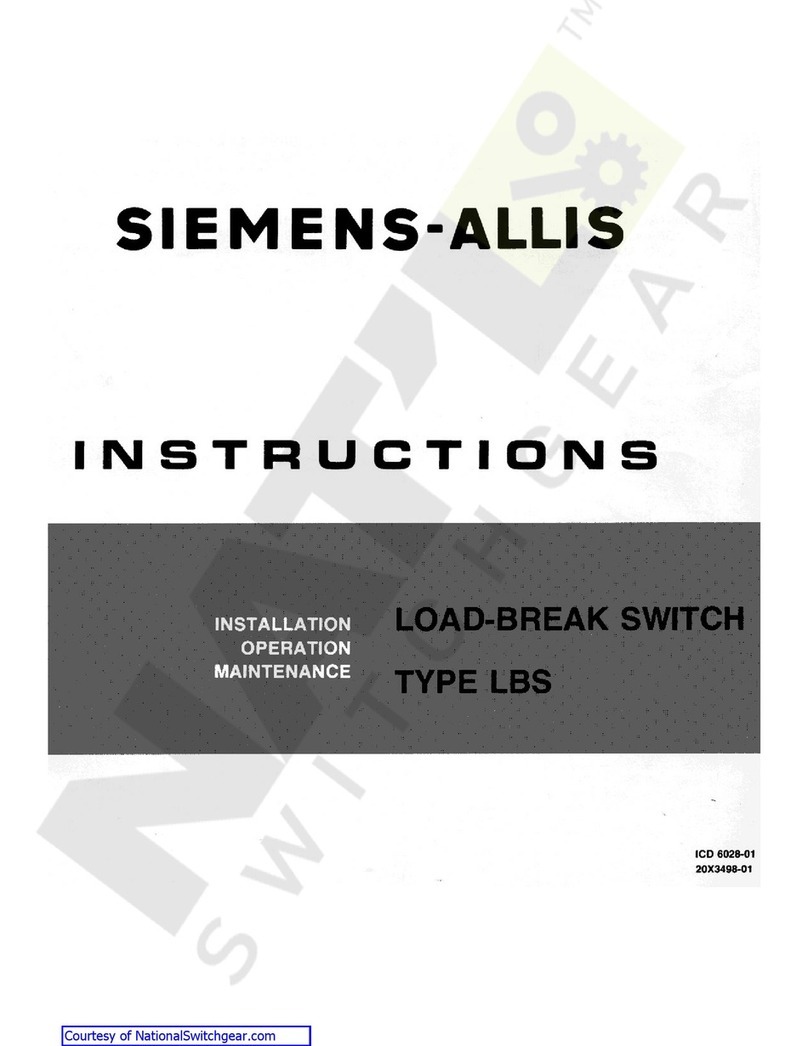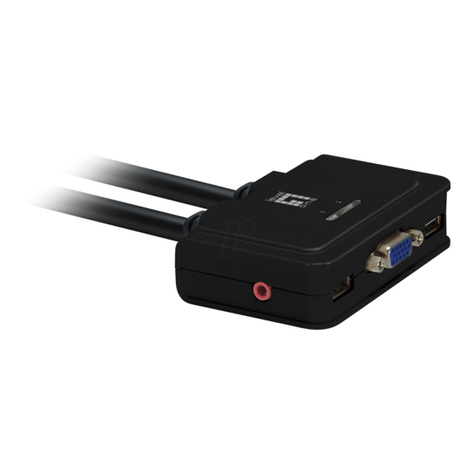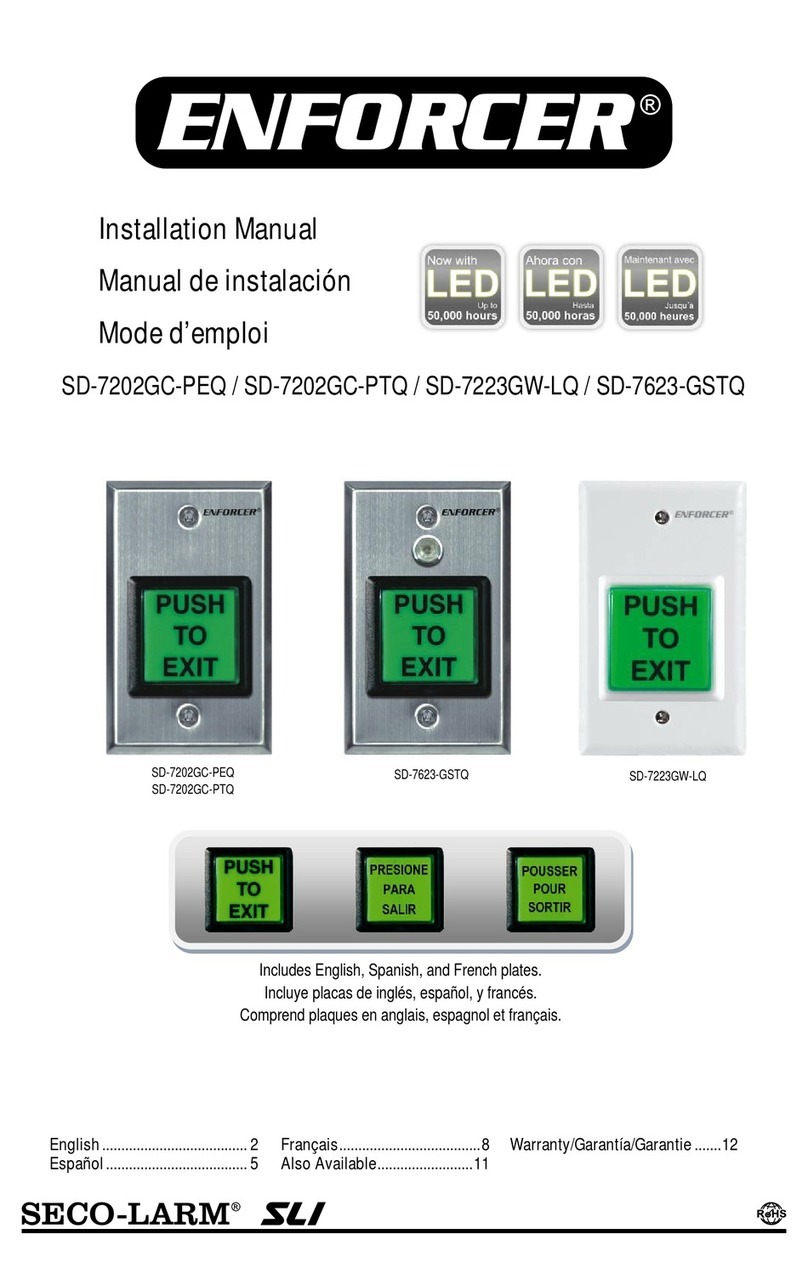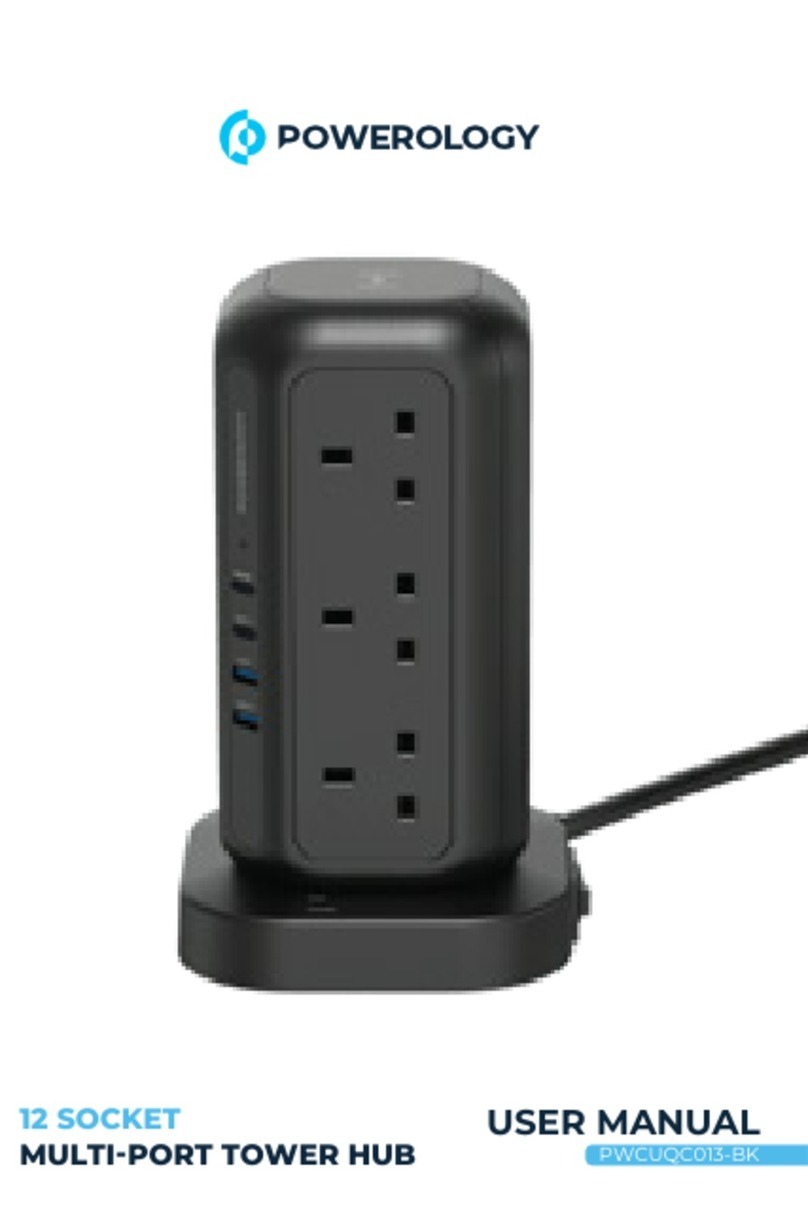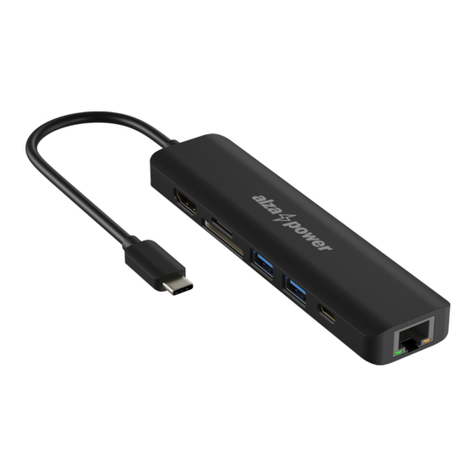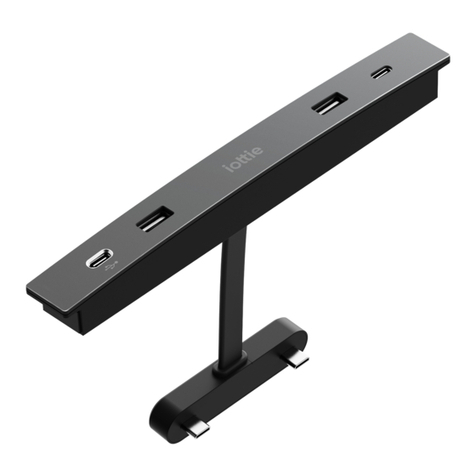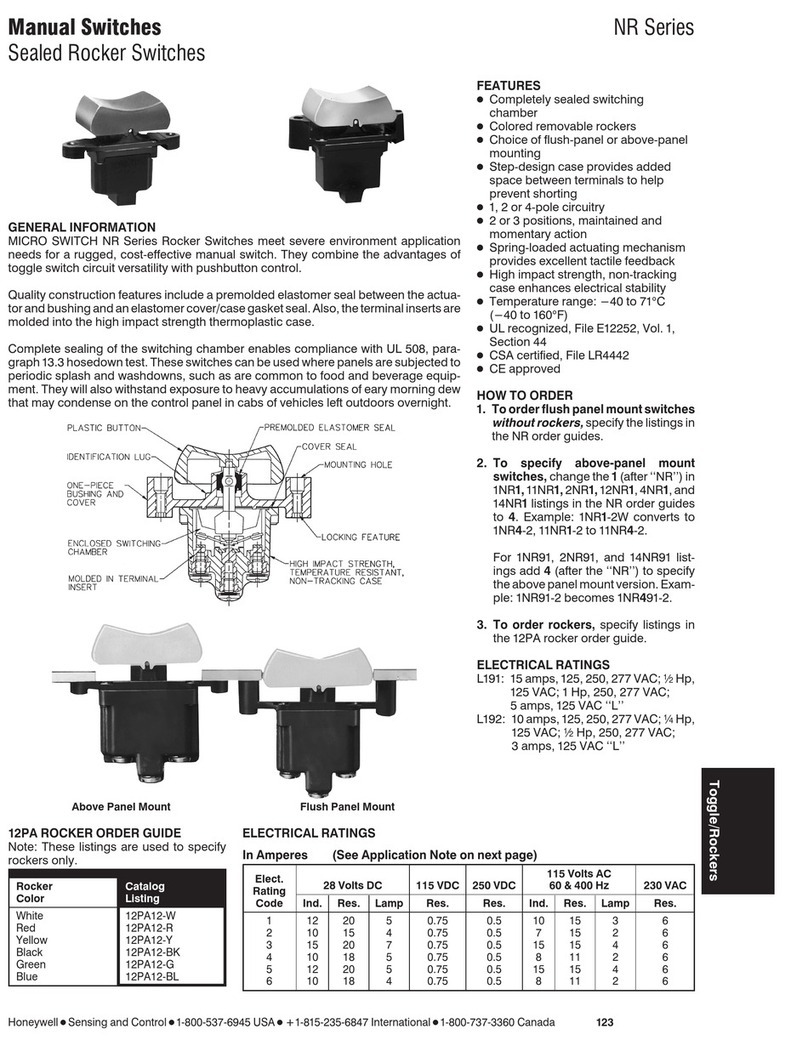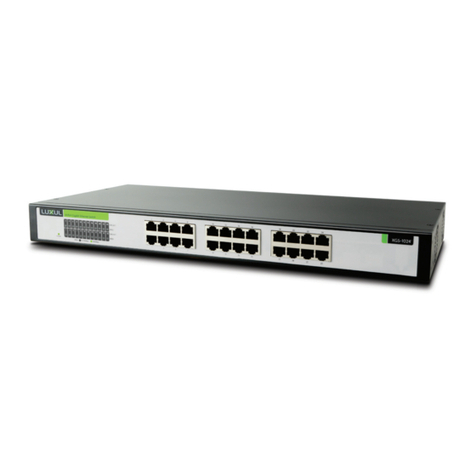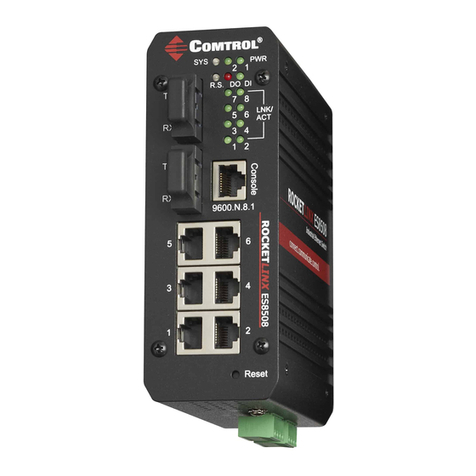Siemens-Allis ME-3 User manual

INDEX
INTRODUCTION
General
Warranty
General
Description
1
16
Future
Breaker
Compartments
Circuit
Breaker
Installation
Circuit
Breaker
Preparation
Circuit
Breaker
Insertion
,
LA
600
,
LA
1600
,
LA
600
F
,
or
LA
16
OOF
Circuit
Breaker
Insertion
,
LA
3000
,
LA
4000
,
or
LA
4000
F
Secondary
Disconnect
Ground
Clip
Key
Interlocks
16
1
17
1
1
17
RECEIVING
AND
HANDLING
General
Identification
Inspection
and
Uncrating
Handling
General
Lifting
Indoor
Sections
Lifting
Outdoor
Sections
Moving
Shipping
Sections
Without
Crane
3
3
19
3
21
3
23
3
23
3
INSPECTING
AND
TESTING
BEFORE
OPERATION
General
Inspection
Testing
General
Current
Transformers
Secondary
Load
Circuit
Control
Circuits
Watt
Meters
,
Watt
-
Hour
Meters
and
Directional
Relays
Static
Overcurrent
Trip
Devices
High
Potential
Tests
Phasing
-
Out
4
4
23
4
23
23
23
STORAGE
5
23
Indoor
Switchgear
Outdoor
Switchgear
5
23
5
23
24
INSTALLATION
Introduction
Foundation
Installing
Shipping
Sections
.
.
General
Setting
Shipping
Sections
.
.
Plumb
Line
Instructions
..
Leveling
Indoor
Switchgear
Traveling
Crane
Installation
Leveling
Outdoor
Switchgear
Electrical
Connections
Bus
Bars
Transformer
Bus
Joints
...
.
Typical
Cable
Lug
Mounting
Primary
Cable
Connections
Secondary
Control
Wiring
.
.
Ground
Connection
Current
Transformer
6
24
6
24
6
24
7
24
7
8
MAINTENANCE
...
.
General
Inspections
Lubrication
General
Electrical
Contacts
.
.
Corrosive
Atmospheres
Traveling
Crane
Hoist
Relays
and
Instruments
Equipment
Surfaces
25
11
25
11
25
11
25
11
25
11
25
11
26
14
26
14
26
14
26
14
14
INSTRUCTION
BOOK
REFERENCES
26
16
The
information
contained
within
is
intended
to
assist
operating
personnel
by
providma
information
on
the
general
characteristics
of
equipment
of
this
type
.
It
does
not
relieve
the
user
of
responsibility
to
use
sound
engineer
.
ng
practices
in
the
installation
,
application
,
operation
and
maintenance
of
the
particular
equipment
purchased
-
If
drawings
or
other
supplementary
instructions
for
specific
applications
are
forwarded
with
this
manual
or
separately
,
they
take
precedence
over
any
conflicting
or
incomplete
information
in
this
manual
.
1
Courtesy of NationalSwitchgear.com

*
.
ILLUSTRATIONS
Fig
.
20
.
—
Neutral
and
Ground
Bus
Bar
Connections
on
Indoor
Switchgear
Fig
.
21
.
—
Neutral
and
Ground
Bus
Bar
Connection
on
Outdoor
Switchgear
Fig
.
22
.
—
Bus
Splice
Detail
Fig
.
23
.
—
Neutral
Bus
Splice
Detail
Fig
.
24
.
—
Method
of
Bolting
Bus
Bar
Joints
.
.
.
.
Fig
.
25
.
—
Typical
Lug
Mounting
Fig
.
26
.
—
Typical
Control
Cable
Connections
.
.
.
.
Fig
.
27
.
—
Secondary
Control
Cable
Connections
..
.
17
Fig
.
28
.
—
Molded
PVC
Boots
Prevent
Accidental
Contact
with
Live
Parts
Fig
.
29
.
—
Circuit
Breaker
Compartments
.
.
.
Fig
.
30
.
—
Remove
all
Tags
and
Blocking
Before
Opening
Circuit
Breaker
Fig
.
31
.
-
Breaker
Hitching
Instructions
Fig
.
32
.
-
Lowering
Interlock
Slide
Fig
.
33
.
—
Circuit
Breaker
Positioning
Diagram
.
.
.
20
Fig
.
34
.
—
Using
Racking
Crank
Fig
.
35
.
—
Installation
of
Extension
Rails
Fig
.
36
.
-
Interlock
Diagram
,
LA
-
3000
and
LA
-
4000
Fig
.
37
.
—
Key
Interlock
-
LA
-
3000
and
.
LA
<
-
4000
Circuit
Breakers
Fig
.
38
.
—
Key
Interlock
-
LA
-
600
and
LA
-
1600
Circuit
Breakers
.
Fig
.
39
.
—
Current
Transformer
Testing
Fig
.
40
.
—
Proper
Phasing
Fig
.
1
—
Typical
Indoor
Low
Voltage
Switchgear
—
Type
ME
—
Typical
Outdoor
Low
Voltage
Switchgear
—
Type
OME
—
Lifting
Indoor
Shipping
Sections
—
Lifting
Outdoor
Shipping
Sections
—
Moving
Indoor
Sections
with
Rollers
..
.
—
Handling
Indoor
Sections
with
Jacks
...
—
Moving
Outdoor
Sections
with
Rollers
.
..
—
Handling
Outdoor
Sections
with
Jacks
.
..
—
Typical
Indoor
Installation
13
1
Fig
.
2
.
2
13
Fig
.
3
.
Fig
.
4
.
Fig
.
5
.
Fig
.
6
.
Fig
.
7
.
Fig
.
8
.
Fig
.
9
.
Fig
.
10
.
—
Typical
Outdoor
Installation
.
Fig
.
11
.
—
Indoor
Methods
of
Anchoring
3
13
4
14
4
14
5
15
5
16
5
6
7
17
8
18
Fig
.
12
.
—
Outdoor
Method
of
Anchoring
.
.
Fig
.
13
.
—
Positioning
Indoor
Switchgear
and
Transformer
8
19
9
19
Fig
.
14
.
—
Positioning
Outdoor
Switchgear
and
Transformer
Fig
.
15
.
—
Indoor
Hood
Assembly
Fig
.
16
.
—
Outdoor
Hood
Assembly
Installed
with
Weather
Seal
Fig
.
16
A
—
H
.
V
.
&
L
.
V
.
Hood
Brackets
for
750
&
1
,
000
KVA
Transformers
Fig
.
16
B
.
—
H
.
V
.
&
L
.
V
.
Hood
Brackets
For
1
,
500
&
2
,
000
KVA
Transformers
Fig
.
17
.
—
Traveling
Crane
Installation
Fig
.
18
.
—
Roof
Channel
Installation
Fig
.
19
.
—
Views
of
Typical
Electrical
Connector
Locations
20
10
10
20
21
10
22
16
22
16
11
23
11
24
25
12
u
Courtesy of NationalSwitchgear.com

INTRODUCTION
Warranty
For
specific
warranty
coverage
,
see
the
sales
contract
.
Furnished
equipment
has
been
designed
to
operate
in
a
system
having
the
circuit
capacity
specified
by
the
pur
-
chaser
.
If
for
any
reason
the
equipment
is
later
used
in
a
different
system
,
or
if
the
short
-
circuit
capacity
of
the
system
is
increased
,
a
check
must
be
made
of
the
momentary
rating
of
the
switchgear
,
the
interrupting
capacity
of
the
circuit
breakers
and
the
bus
capacity
.
Failure
on
the
part
of
the
user
to
obtain
approval
of
intended
changes
from
Allis
-
Chalmers
may
be
cause
for
voiding
the
warranty
.
General
This
manual
contains
instructions
for
receiving
and
handling
,
storage
,
installation
,
inspection
and
testing
,
and
maintenance
of
Allis
-
Chalmers
Low
-
Voltage
Metal
-
Enclosed
Switchgear
.
The
switchgear
described
herein
consists
of
the
600
volt
class
indoor
and
outdoor
designs
.
The
contents
of
this
manual
are
applicable
to
all
“
ME
”
and
“
OME
”
switchgear
classes
and
designs
unless
noted
otherwise
.
Allis
-
Chalmers
low
voltage
switchgear
carries
letter
designations
as
follows
:
.
“
ME
”
for
indoor
and
“
OME
”
for
outdoor
equipment
.
These
designations
may
appear
on
drawings
and
other
media
,
and
familarity
with
them
will
simplify
communica
-
tion
with
the
factory
.
Figures
1
and
2
show
some
typical
installations
.
Standard
construction
details
of
necessary
auxiliary
and
accessory
equipment
are
included
in
appro
-
priate
sections
.
Instructions
for
special
mechanical
and
electrical
devices
,
as
specified
in
the
purchase
order
,
are
covered
by
supplementary
data
submitted
with
this
instruc
-
tion
manual
.
Ratings
described
in
this
manual
are
in
accordance
with
NEMA
,
IEEE
and
ANSI
standard
require
-
ments
.
Genera
*
Description
The
switchgear
described
in
this
manual
is
the
metal
-
enclosed
type
.
Units
are
of
modular
construction
consisting
of
individual
compartments
to
house
circuit
breakers
and
auxiliary
equipment
.
Frames
in
the
rear
of
the
switchgear
support
bus
work
and
customers
connections
.
Interlocks
are
provided
,
where
necessary
,
to
insure
proper
sequence
and
safe
operation
.
Figure
1
.
-
Typical
Indoor
Low
Voltage
Switchgear
-
Type
ME
1
Courtesy of NationalSwitchgear.com

Outdoor
switchgear
(
OME
)
is
similar
to
indoor
switGhgear
,
except
that
it
is
enclosed
in
a
weather
proof
steel
housing
.
This
equipment
is
designed
so
that
weather
conditions
will
not
affect
operation
.
An
illuminated
service
aisle
is
provided
at
the
front
of
the
switchgear
which
allows
inspection
and
maintenance
without
exposure
to
the
elements
.
Access
to
this
aisle
is
by
means
of
full
length
hinged
doors
.
Hinged
doors
are
also
provided
at
the
rear
of
the
shelter
for
access
to
primary
entrance
compartments
.
Indoor
switchgear
consists
of
one
or
more
cubicles
secured
together
as
a
single
group
.
It
is
completely
operational
when
installed
and
connected
to
the
customer
’
s
power
and
equipment
.
Each
cubicle
consists
of
three
or
four
stacked
compartments
,
framed
and
secured
together
as
a
single
unit
.
Circuit
breaker
compartments
are
provided
with
hinged
access
doors
for
installing
or
removing
circuit
breakers
.
Auxiliary
compartments
are
designed
with
hinged
panels
for
mounting
of
instruments
,
relays
and
switches
.
Figure
2
.
-
Typical
Outdoor
Low
Voltage
Switchgear
-
Type
OME
2
Courtesy of NationalSwitchgear.com

RECEIVING
AND
HANDLING
Handling
General
Each
shipping
section
of
switchgear
is
securely
blocked
and
braced
for
shipment
.
It
is
crated
,
boxed
or
covered
as
required
by
shipping
conditions
.
Whatever
method
of
ship
-
ment
is
employed
,
every
precaution
is
taken
to
insure
its
safe
arrival
.
If
special
handling
is
required
,
it
is
so
indicated
on
the
shipment
.
All
moving
parts
are
secured
.
However
,
relatively
delicate
instruments
are
included
which
requires
that
each
section
be
handled
carefully
until
installed
in
its
final
location
.
General
There
are
a
number
of
methods
that
can
be
used
in
handling
the
switchgear
which
when
properly
employed
,
will
not
damage
the
switchgear
sections
.
The
handling
equipment
and
method
used
will
be
determined
by
conditions
at
the
installation
site
.
Lifting
with
a
crane
is
the
preferred
method
of
handling
however
,
roller
bars
,
jacks
or
forklift
may
be
used
prior
to
removal
of
the
wooden
skid
.
Each
switchgear
shipping
section
has
provisions
for
attach
-
ing
lifting
equipment
(
see
figures
3
and
4
)
.
Though
the
lift
points
vary
in
location
among
indoor
and
outdoor
sections
,
each
is
designed
for
use
with
a
crane
of
adequate
height
and
capacity
.
To
determine
the
required
crane
capacity
,
check
the
shipping
manifest
or
multiply
the
number
of
cubicles
in
the
shipping
section
by
3000
pounds
.
NOTE
Circuit
breakers
are
shipped
installed
in
their
respec
-
tive
compartments
,
secured
in
the
fully
connected
position
,
and
closed
.
A
bolt
is
placed
through
the
trip
button
to
prevent
accidental
tripping
during
shipment
.
(
See
Figure
30
)
Identification
In
the
case
of
multiple
sections
of
load
center
substations
,
the
low
voltage
circuit
breakers
are
key
interlocked
with
the
transformer
primary
switches
.
Check
substation
numbers
on
the
packaging
of
the
switchgear
and
primary
switches
with
those
noted
on
the
applicable
General
Arrangement
and
Floor
Plan
drawings
.
These
numbers
insure
that
all
the
components
,
applying
to
a
particular
substation
,
are
cor
-
rectly
located
before
uncrating
.
Inspection
and
Uncrating
Inspect
the
shipment
as
soon
as
possible
after
receiving
for
any
damage
that
may
have
occurred
in
transit
.
Before
un
-
crating
,
examine
the
crate
itself
for
damage
.
A
splintered
crate
indicates
that
the
area
within
may
have
been
damaged
.
Be
careful
when
uncrating
the
shipment
.
The
use
of
sledge
-
hammers
and
crowbars
may
damage
the
finish
,
if
not
the
item
itself
.
Use
nailpullers
.
After
uncrating
,
examine
each
item
for
any
possible
damage
.
Check
the
shipping
manifest
to
be
certain
that
all
items
have
been
received
.
Do
not
destroy
any
packing
material
until
all
items
listed
on
the
shipping
manifest
have
been
accounted
for
.
Do
not
remove
identification
cards
from
apparatus
until
the
switchgear
is
completely
installed
.
If
there
is
a
shortage
,
make
certain
it
is
noted
on
the
freight
bill
and
contact
the
carrier
im
-
mediately
.
Notify
the
representing
Allis
-
Chalmers
sales
office
of
any
shortage
or
damage
.
Unusual
circumstances
may
require
partial
shipments
of
switchgear
.
Should
a
case
of
this
nature
exist
,
provision
is
made
for
easy
installation
of
these
portions
.
Figure
3
.
-
Lifting
Indoor
Shipping
Sections
3
Courtesy of NationalSwitchgear.com

Lifting
Indoor
Sections
(
see
figure
3
)
if
used
,
must
be
timbers
of
sufficient
strength
to
withstand
the
compressive
force
of
the
cables
.
Wooden
spreaders
should
have
steel
bands
or
studs
to
prevent
splitting
.
CAUTION
Lifting
channels
on
indoor
sections
must
not
be
removed
under
any
circumstances
until
the
switch
-
gear
is
installed
in
its
final
location
.
These
channels
insure
the
true
alignment
of
the
cubicles
in
a
shipping
section
until
it
is
leveled
and
anchored
.
Moving
Shipping
Sections
Without
Crane
Within
buildings
and
obstructed
areas
where
a
crane
cannot
be
used
,
the
shipping
sections
are
moved
with
rollers
,
cribbing
and
jacks
.
These
methods
are
illustrated
in
figures
5
and
6
for
indoor
handling
and
figures
7
and
8
for
outdoor
handling
.
To
prevent
distortion
of
shipping
sections
,
rollers
and
/
or
cribbing
should
be
of
uniform
size
and
used
in
suf
-
ficient
numbers
to
evenly
distribute
the
load
.
Remove
the
rollers
and
lower
shipping
section
carefully
.
Leave
wooden
skids
(
when
provided
)
in
place
during
moving
and
until
final
location
is
reached
.
Jacking
angles
are
provided
on
either
side
of
indoor
shipping
sections
.
Four
angles
are
furnished
for
attaching
to
the
corners
of
outdoor
shipping
sections
.
Indoor
jacking
angles
are
removed
and
discarded
when
final
location
is
reached
.
Outdoor
jacking
angles
may
be
removed
when
the
jacks
are
no
longer
required
.
Lifting
channels
are
mounted
on
top
of
indoor
shipping
sections
.
They
are
normally
furnished
with
lift
point
spreaders
which
can
be
discarded
after
installation
.
The
load
angle
on
lifting
cables
must
be
at
least
45
degrees
.
A
lesser
angle
could
damage
the
shipping
section
.
Lifting
Outdoor
Sections
(
see
figure
4
)
Lift
outdoor
shipping
sections
by
attaching
cables
to
four
lifting
angles
mounted
on
the
ends
of
the
channel
base
.
Cable
spreaders
are
required
above
the
roof
of
the
shipping
section
to
protect
it
from
damage
.
Wooden
cable
spreaders
,
CAUTION
Forklift
trucks
should
be
used
with
discretion
as
improper
lift
points
could
cause
extreme
damage
to
shipping
sections
.
j
0
-
9
*
<
3
(
9
Qj
/
SKIDS
ROLLERS
-
—
Figure
4
.
-
Lifting
Outdoor
Shipping
Sections
Figure
5
.
-
Moving
Indoor
Sections
with
Rollers
4
Courtesy of NationalSwitchgear.com

!
Figure
6
.
-
Handling
Indoor
Sections
with
Jacks
Figure
8
.
-
Handling
Outdoor
Sections
with
Jacks
Figure
7
.
-
Moving
Outdoor
Sections
with
Rollers
STORAGE
Indoor
Switchgear
When
switchgear
is
not
to
be
installed
immediately
,
it
should
be
processed
as
previously
described
in
Inspection
and
Uncrating
.
Indoor
switchgear
should
be
stored
indoors
because
it
is
neither
waterproof
nor
dripproof
.
If
it
must
be
stored
outdoors
,
or
in
a
humid
,
unheated
area
,
provide
adequate
covering
and
place
a
heat
source
of
approximately
500
watts
output
within
each
cubicle
to
prevent
condensa
-
tion
.
Space
heaters
are
not
standard
equipment
on
indoor
switchgear
.
Oil
or
grease
any
moving
parts
such
as
hinges
,
steel
gears
or
drive
screws
,
if
subjected
to
prolonged
storage
.
When
batteries
are
supplied
,
connect
them
to
a
charger
.
Outdoor
Switchgear
When
storing
outdoor
switchgear
in
an
area
exposed
to
the
weather
or
humid
conditions
,
the
space
heaters
provided
must
be
energized
.
Access
to
the
heater
circuit
is
gained
by
opening
the
door
to
the
metering
compartment
.
Connect
lead
-
acid
batteries
(
if
furnished
)
to
a
trickle
charger
—
never
leave
them
in
dead
storage
.
Oil
hinges
and
other
moving
parts
.
5
Courtesy of NationalSwitchgear.com

INSTALLATION
Introduction
Prior
to
installation
,
review
this
instruction
book
and
the
drawings
mailed
to
you
earlier
.
This
previously
supplied
drawing
packet
includes
:
General
Arrangement
and
Floor
Plan
Three
Line
Diagram
Schematic
Diagram
Panel
Arrangement
Panel
Arrangement
Bill
of
Material
Nameplate
Engraving
List
Installation
Instruction
Drawing
Master
Wiring
Diagram
Unit
Wiring
Diagrams
Circuit
Breaker
Control
Schematic
Accessories
Drawing
figure
11
.
Anchor
bolt
mounting
of
outdoor
switchgear
is
shown
in
figure
12
.
Indoor
Foundation
Supporting
surfaces
for
the
switchgear
at
each
mounting
bolt
location
must
be
level
and
in
the
same
plane
.
There
must
not
be
any
projection
above
this
plane
within
the
area
covered
by
the
switchgear
cubicles
.
If
customers
floor
or
grouted
sill
channels
do
not
meet
this
requirement
,
it
will
be
necessary
to
shim
when
erecting
the
switchgear
.
Outdoor
Foundation
The
supporting
surfaces
for
the
switchgear
base
must
be
level
and
in
the
same
plane
within
1
/
16
”
.
If
concrete
,
grouted
sill
channels
,
pier
support
plates
,
etc
.
do
not
meet
this
requirement
,
or
if
there
are
any
projections
higher
than
the
support
points
and
in
line
with
the
support
members
shims
must
be
installed
when
erecting
the
switchgear
to
provide
equivalent
true
surface
for
switchgear
support
.
The
switchgear
must
be
supported
along
the
length
of
its
base
at
points
not
exceeding
a
span
of
six
(
6
)
feet
.
If
pilings
are
used
,
the
diameter
of
these
pilings
is
to
be
determined
by
the
customer
for
proper
loading
.
However
,
they
must
not
be
less
than
twelve
(
12
)
inches
for
sufficient
contact
with
base
,
allowing
for
space
for
shipping
split
and
space
for
grouting
in
of
bed
plate
if
used
.
All
shipping
splits
must
be
supported
and
taken
into
consideration
when
founda
-
tion
is
constructed
.
Foundation
Extreme
care
should
be
taken
in
the
layout
of
the
founda
-
tion
or
floor
.
Refer
to
the
General
Arrangement
drawing
of
each
substation
involved
and
figures
9
and
10
for
exact
locations
,
limitations
and
instructions
.
Floors
,
sills
,
piers
or
pilings
,
whichever
type
of
foundation
is
used
,
must
have
smooth
level
surfaces
and
be
in
the
same
plane
to
within
1
/
16
inch
.
Foundations
must
be
sufficiently
strong
to
support
the
weight
of
the
cubicles
and
circuit
breakers
.
Acceptable
methods
of
setting
channel
sills
for
indoor
switchgear
is
illustrated
in
Views
A
through
C
,
INDOOR
DIMENSIONS
.
HOIST
(
OPTIONAL
)
fereEb
&
M
E
4
3
UJ
-
k
7
-
H
—
10
-
4
—
10
—
I
H
—
13 13
—
—
H
-
7
"
—
10
—
—
10
.
—
Jfc
—
¥
-
35
-
35
-
15
KZ
5
-
25
n
t
fri
'
1
"
'
v
285
\
i
)
-
31
\
\
:
<
s
.
HOIST
ay
*
4
i
*
Lu
:
LL
<
1
7
SPACE
AVAILABLE
FOR
CUST
.
CABLE
CONN
IN
PLAN
VIEW
END
VIEW
I
-
1
x
z
x
X
END
5
=
i
END
=
>
=
>
3
-
-
TRIM
•
J
TRIM
0
I
It
ttH
AJSL
t
as
,
SIM
PE
*
R
SJ
l
*
n
D
?
PTH
0.1
1
&
.
5
—
•
K
>
5
—
-
j
115
115
-
j
I
*
-
10.5
-
10.5
j
j
-
10.5
-
»
•
I
0
.
S
^
|
-
7.5
-
-
7.5
-
|
j
*
7.5
-
-
7.5
^
J
-
4
W
*
HlUfORWOCR
,
0005
0
«
(
!
.
&
*
,
TO
Sr
.
.
LS
f
—
II
—
31
f
.
aoRUM
U
*
FRONT
*
T
rTf
36
30
18
I
18
3
/
4
DIA
.
HOLES
FOR
ANCHOR
BOLTS
OR
WELDING
TO
SILLS
L
CU
5
T
FLOOR
*
3
T
ir
O
^
AjU
ESTK
&
s
nsn
Btoir
•
HttRtcrc
.
h
i
«
E
6
ME
-
5
ME
4
ME
.
4
ME
-
3
ME
-
3
CIST
CCHDUI
1
7
D
MAX
ABTT
.
'
t
FLOCP
UHL
Figure
9
.
-
Typical
Indoor
Installation
6
Courtesy of NationalSwitchgear.com

When
grouted
in
anchor
bolts
are
required
,
they
must
be
located
as
shown
on
the
General
Arrangement
drawing
.
Make
certain
that
all
conduits
are
perpendicular
to
the
base
plane
and
are
located
to
fit
in
the
area
provided
as
shown
on
the
General
Arrangement
drawing
.
Secondary
control
conduits
must
not
exceed
a
2
inch
nominal
pipe
size
(
2
-
3
/
8
inches
OD
.
)
.
Though
the
conduit
should
extend
above
floor
or
slab
to
enter
the
cubicle
and
exclude
water
,
it
should
not
exceed
1
-
1
/
2
inches
on
indoor
switchgear
.
On
outdoor
switchgear
the
secondary
control
conduit
should
extend
approximately
7
inches
above
the
slab
or
base
plane
but
not
exceed
a
maximum
of
8
inches
or
a
minimum
of
6
-
3
/
4
inches
.
In
cases
where
shipping
sections
cannot
be
lowered
over
the
conduit
because
of
headroom
or
other
restriction
,
conduit
couplings
can
be
grouted
in
flush
with
the
slab
.
Conduit
nipples
can
then
be
added
after
switchgear
is
in
place
.
Keep
conduit
ends
capped
during
construction
until
ready
to
make
electrical
connections
.
This
precaution
will
prevent
dirt
,
moisture
and
vermin
from
entering
the
conduit
.
If
the
primary
power
conduit
is
grouted
into
the
founda
-
tion
,
follow
the
preceding
instruction
.
(
This
conduit
may
often
enter
through
a
trench
or
planned
opening
.
)
c
Installing
Shipping
Sections
General
The
proper
method
of
installation
depends
on
whether
the
switchgear
is
shipped
as
one
complete
unit
or
in
two
or
more
shipping
sections
.
The
General
Arrangement
drawing
will
indicate
the
shipping
sections
and
their
location
within
the
line
-
up
.
Sections
are
assembled
and
wired
in
accordance
with
the
arrangement
as
in
final
installation
.
As
previously
covered
under
“
Foundation
”
,
mounting
surfaces
,
sills
,
slab
,
piers
or
piling
must
be
level
and
in
the
same
plane
.
Also
,
conduits
must
be
properly
located
and
perpendicular
to
such
a
degree
that
they
will
clear
the
floor
plate
cutouts
.
Mounting
surfaces
must
be
swept
free
of
stone
,
chips
or
other
debris
which
might
impede
rollers
or
leveling
of
the
switchgear
.
unit
and
is
controlled
by
a
switch
on
the
wall
.
Each
group
of
units
contains
a
convenience
outlet
and
switches
.
Standard
accessories
for
outdoor
units
include
all
those
provided
for
indoor
switchgear
.
In
addition
,
a
light
is
mounted
inside
and
above
the
front
door
of
each
PLAN
VIEW
LOCATION
OF
3
/
4
DIA
ANCHOR
BOLTS
.
BOLTS
FURNISHED
BY
CUSTOMER
CLAMP
WASHERS
FURNISHED
BY
A
-
C
SEE
ANCHOR
BOLT
ARRG
'
T
18
-
193
-
919
SPACE
AVAILABLE
IN
FLOOR
OF
UNIT
FOR
CUSTOMERS
CONTROL
CONNECTIONS
SPACE
AVAILABLE
IN
FLOOR
OF
UNIT
FOR
CUSTOMERS
POWER
CONNECTIONS
el
I
—
,
Ui
—
1
2
£
*
*
'
J
END
VIEW
2.7
C
i
-
IN
•
at
V
:
o
9
T
X
;
O
«
T
t
\
i
i
.
1
T
I
—
Jr
i
—
2
^
-
i
'
IT
*
<
o
—
I
2
*
13
—
"
J
—
10
16
—
H
13
—
—
16
-
UJ
>
O
i
-
94
O
I
cc
37
u
.
o
IllA
UJ
UJ
UJ
UJ
5
5
5
5
SIDE
90
PL
'
i
SIDE
PL
7
-
24
-
I
55
3
<
18
-
—
*
36
I
SILL
ji
1
I
6
J
UJ
<
Vi
|
L
!
_
i
All
dimensions
are
in
inches
(
1
)
A
*
ingle
OME
-
3
unit
has
a
6
"
spacer
added
to
the
left
.
(
2
)
A
single
OME
-
4
unit
has
a
6
"
spacer
added
to
the
left
if
there
is
metering
on
any
breaker
panel
.
Figure
10
.
-
Typical
Outdoor
Installation
1
Courtesy of NationalSwitchgear.com

ANCHOR
BOLTS
33
•
-
4
*
3
"
VIEW
A
MAX
.
r
«
fnrrFT
^
%
*
•
>
:
^
^
VTT
T
»
A
R
*
A
'
ft
-
.
*
•
.
.
©
-
p
CP
*
ft
,
•
*
.
w
-
<
1
A
*
.
*
’
*
r
o
*
*
A
£
>
•
3
f
5
»
P
.
p
>
*
WELD
TO
FLOOR
STEEL
VIEW
B
/
—
3
4
"
I
"
—
20
j
—
REAR
DOOR
OF
SWITCH
GEAR
UNIT
8
RF
'
A
\
«
i
I
r
i
Ck
p
«
/
H
i
J
3
/
4
"
HEX
NUT
FURNISHED
BY
CUSTOMER
A
i
*
4
3
"
,
CLAMPING
WASHER
FURNISHED
BY
A
.
C
MFG
.
CO
(
18
-
623
-
853
)
6
"
6
"
dh
u
2
”
DRILL
AND
TAP
FLOOR
STEEL
\
yr
:
v
»
6
R
\
•
*
*
c
*
*
•
>
t
<
o
V
,
•
*
«
9
/
P
&
,
-
V
VIEW
C
o
>
V
:
v
^
.
’
A
.
)
rvt
•
-
eu
*
R
A
.
>
•
.
•
O
A
6
A
A
*
\
•
O
ANCHOR
BOLTS
FURNISHED
BY
CUSTOMER
.
&
.
.
>
SIDE
VIEW
Figure
12
.
-
Outdoor
Method
of
Anchoring
Figure
11
.
-
Indoor
Methods
of
Anchoring
positioned
and
leveled
as
each
successive
section
will
depend
on
the
first
.
On
line
-
up
with
ventilated
dry
transformers
,
the
switchgear
is
placed
against
the
transformer
but
not
bolted
to
it
.
Only
the
flexible
connectors
are
bolted
to
transformer
terminals
.
(
See
figure
13
.
)
On
installation
with
liquid
transformers
,
the
switchgear
is
placed
as
shown
on
the
General
Arrangement
drawing
,
with
the
side
one
inch
from
the
edge
of
the
transformer
cover
.
The
flexible
connectors
are
bolted
to
transformer
terminals
(
see
General
Arrangement
drawing
)
and
a
hood
is
bolted
to
the
side
of
the
switchgear
and
the
top
of
the
transformer
tank
.
Setting
Shipping
Sections
After
checking
each
shipping
section
for
its
proper
location
sequence
,
as
shown
on
the
General
Arrangement
drawing
,
move
the
first
section
of
switchgear
to
its
location
.
When
a
transformer
is
part
of
the
installation
,
the
switchgear
is
positioned
next
to
the
transformer
as
shown
in
figures
13
and
14
.
The
sections
are
to
be
kept
just
high
enough
to
clear
conduits
.
The
switchgear
is
then
moved
toward
the
transformer
to
the
dimensions
shown
on
the
General
Arrangement
drawing
.
At
the
same
time
,
properly
align
anchor
bolts
and
conduit
below
the
switchgear
.
With
all
points
aligned
,
conduit
caps
and
floor
plate
conduit
covers
removed
,
carefully
lower
the
sections
to
their
permanent
location
.
It
is
important
that
the
first
section
be
accurately
8
Courtesy of NationalSwitchgear.com

NOTE
J
On
112
-
1
/
2
,
150
,
500
and
1000
KVA
transformers
,
adaptors
are
furnished
which
are
normally
mounted
on
low
voltage
bushings
.
The
flexible
connectors
are
to
be
attached
to
these
adaptors
.
The
hood
assembly
consists
of
three
parts
:
a
box
,
a
cover
and
an
off
-
set
angle
along
with
attaching
hardware
(
See
figures
15
and
16
)
.
When
necessary
,
weather
sealing
hard
-
ware
and
weather
stripping
are
furnished
.
The
off
-
set
angle
seals
the
one
inch
space
between
the
switchgear
and
the
transformer
top
cover
.
Figure
14
.
-
Positioning
Outdoor
Switchgear
and
Transformer
ANGLE
BRACKET
1
LV
PLATE
E
XT
E
NS
ON
(
SHIPPED
IN
PLACE
)
O
G
.
0
-
0
o
LV
.
*
v
.
G
O
NOTE
THIS
DRAWING
SHOWS
THE
LOCATION
0
*
THE
COVER
EXTENSION
PIECES
TO
WHICH
THE
HOODS
ARE
FASTENED
.
THE
ANGLE
BRACKETS
CANNOT
BE
INSTALLEO
UNTIL
AFTER
THE
TRANSFORMER
HAS
BEEN
LIFTED
INTO
PLACE
BECAUSE
OF
INTERFERENCE
WITH
THE
SLINGS
THE
L
V
.
PLATE
EXTENSION
WILL
BE
IN
THE
PROPER
POSITION
WHEN
SMIPPEO
.
THE
TRANSFORMER
SHOULD
BE
LOCATED
WITH
THE
L
.
V
.
LINE
BUSHING
5
10
3
/
4
FROM
FACE
OF
SWITCHGEAR
.
^
OF
L
.
V
.
BUSHING
—
r
-
FACE
OF
SWITCHGEAR
'
10
^
CAPTIVE
NUTS
SUPPLIED
WITH
TRANSFORMER
.
S
3
"
1
g
a
HOOD
ANGLE
BRACKETS
STRAPPED
TO
RAO
.
FOR
SHIPPING
.
Figure
16
A
.
—
H
.
V
.
&
L
.
V
.
Hood
Brackets
for
750
&
1000
KVA
Transformers
Figure
15
.
-
Indoor
Hood
Assembly
ANGLE
BRACKET
L
V
PLATE
EXTENSION
^
WEATHERSEAL
I
HV
PI
ATE
EXTENSION
'
x
WASHERS
o
I
I
,
TOP
COVER
o
I
o
o
I
I
.
PLUG
HOLES
WITH
WEATHERSEAl
WASHERS
FURNISHED
WHEN
BOX
IS
IN
LOWER
POSITION
l
“
i O
L
.
V
<
?
-
I
I
I
I
£
OF
L
V
BUSHING
NOTE
'
ANGLE
BRACKETS
B
EXTENSION
*
1
PLATES
WILL
BE
IN
PLACE
v
WHEN
SHIPPED
LOCATE
TO
THIS
1
SOOKVAj
OIMENSION
13
V
42000
KVA
|
FACE
OF
SWITCHGEAR
Va
CAPTIVE
NUTS
SUPPLIED
A
WITH
TRANSFORMER
'
\
r
j
e
POSITION
DEPENDS
'
Sj
'
SS
*
ON
TRANSF
KVA
RATING
Figure
16
B
.
—
H
.
V
.
&
L
.
V
.
Hood
Brackets
for
1500
&
2000
KVA
Transformers
Figure
16
.
-
Outdoor
Hood
Assembly
Installed
With
Weather
Seal
10
Courtesy of NationalSwitchgear.com

Plumb
Line
Instructions
After
setting
either
single
or
multiple
sections
,
check
each
section
with
a
plumb
line
to
be
certain
that
it
is
vertical
to
within
1
/
8
inch
and
that
no
shifting
has
occurred
during
handling
.
This
check
must
be
made
at
either
end
of
a
section
near
the
front
panel
.
If
a
line
-
up
consists
of
multiple
sections
,
move
the
next
section
into
position
,
with
the
front
of
the
sections
in
line
and
tight
against
the
adjacent
section
.
Do
not
bolt
sections
together
at
this
time
.
Check
for
plumb
as
on
the
previous
section
and
bolt
sections
together
with
hardware
provided
.
Repeat
for
any
additional
sections
.
Traveling
Crane
Installation
NOTE
The
traveling
crane
is
furnished
as
standard
and
is
shipped
installed
in
outdoor
switchgear
.
The
traveling
crane
is
only
furnished
when
specified
for
indoor
switchgear
.
The
location
of
lifting
channels
on
indoor
switchgear
makes
it
necessary
to
install
the
traveling
crane
after
installation
after
the
shipping
sections
are
in
place
,
leveled
and
securely
fastened
to
the
floor
.
Remove
rear
lifting
channel
and
install
in
front
as
shown
in
figure
17
.
Install
hoist
mounting
equipment
,
consisting
of
braces
(
if
provided
)
,
hoist
stop
angles
and
reinforcing
strips
with
hardware
supplied
.
(
See
Detail
“
A
”
,
figure
17
.
)
Then
mount
the
hoist
(
if
furnished
with
accessories
)
as
shown
on
the
end
of
view
of
figure
9
.
Leveling
Indoor
Switchgear
With
the
first
section
of
cubicles
in
place
and
lifting
channels
still
rigidly
attached
,
examine
each
cubicle
through
anchor
bolt
holes
to
be
certain
that
each
point
of
anchor
is
in
firm
contact
with
sill
channel
or
floor
.
If
there
is
no
contact
,
shims
must
be
added
adjacent
to
the
anchor
bolt
holes
.
These
shims
will
prevent
distortion
of
the
section
when
anchor
hardware
is
drawn
tight
.
The
shims
should
be
approximately
four
inches
square
with
thickness
determined
by
existing
requirement
or
attained
by
stacking
.
Tighten
anchoring
hardware
and
check
for
level
.
Leveling
Outdoor
Switchgear
In
outdoor
arrangements
the
switchgear
,
as
received
,
is
true
and
in
correct
position
relative
to
its
welded
support
channels
.
These
channels
must
be
in
firm
contact
with
the
foundation
in
the
area
of
each
anchor
bolt
.
If
necessary
,
four
inch
square
steel
shims
should
be
installed
to
obtain
this
firm
contact
.
Tighten
anchor
hardware
and
check
for
level
.
Install
roof
channels
,
one
for
each
shipping
split
as
shown
in
figure
18
.
Roof
channels
and
attaching
hardware
are
furnished
with
accessories
.
Figure
IS
.
-
Roof
Channel
Installation
Electrical
Connections
(
See
figure
19
for
typical
locations
)
Bus
Bars
Bus
bars
are
completely
installed
at
the
factory
.
However
,
splice
bars
are
furnished
when
an
order
consists
of
two
or
more
shipping
sections
and
neutral
and
ground
bus
connec
-
tions
between
shipping
sections
are
to
be
made
as
shown
in
figures
19
through
23
with
furnished
hardware
.
Figure
17
.
-
Traveling
Crane
Installation
11
Courtesy of NationalSwitchgear.com

CUBICLE
SlDEVIEWS
ME
-
3
ME
-
3
ME
-
4
ss
—
55
55
I
f
4
>
2
iflll
HINGED
^
-
METER
PANEL
I
O
9
'
I
I
HINGED
BREAKER
PANEL
-
HINGED
METER
PANEL
k
-
g
i
HINGED
U
-
BREAKER
PANEL
I
o
RISERS
ON
L
.
H
.
SIDE
OF
a
>
I
T
c
UNIT
t
•
O
I
92
1
i
HINGED
BREAKER
PANEL
«
#
»
2
92
'
«
\
'
V
U
H
9
i
9
'
p
I
4
»
Li
FTlR
/
rvk
93
It
}
CONNECTORS
l
I
!
I
i
GROUND
8
AR
\
l
f
.
I
i
-
LOCATION
OF
TERMINAL
BLOCKS
ON
L
H
SIDE
OF
UNIT
CONNECTORS
LOCATION
'
,
WHEN
REQUIRED
INCOMING
POWER
CABLE
CONNECTION
I
TO
END
.
OF
BRKR
STUDS
LOCATION
OF
TERMINAL
BLOCKS
ON
L
H
SIDE
OF
UNIT
WHEN
REQUIRED
LOCATION
OF
TERMINAL
BLOCKS
ON
L
H
SIOE
OF
UNIT
WHEN
REQUIRED
TQ
END
OF
BRKR
STUD
TO
END
t
-
26
L
-
26
I
OF
BREAKER
STUOS
GROUND
BAR
ALL
DIMENSIONS
ARE
IN
INCHES
55
/
TO
END
-
29
HINGED
•
ACTER
PANEL
OF
Dj
fi
ADAPTER
HINGED
.
.
METER
^
PANEL
I
:
:
ki
*
9
'
(
93
HINGED
BREAKER
PANEL
HINGEO
-
BREAKER
PANEL
HINGED
^
BREAKER
PANEL
o
'
V
o
o
•
»
<
*
JC
192
92
>
0
9
'
r
>
9
93
*
>
K
ID
|
\
GROUND
BAR
CONNECTORS
-
x
*
BAR
CONNECTORS
I
f
l
4
LOCATION
OF
TERMINAL
BLOCKS
ON
LM
SIOE
Of
UNIT
WHEN
REQUIRED
L
C
0
*
#
*
CT
0
R
3
\
LOCATION
Of
TERMINAL
BLOCKS
ON
L
.
H
SIDE
OF
UNIT
WKN
REQUIRED
LOCATION
OF
/
TERMINAL
BLOCKS
ON
L
.
H
SIDE
OF
/
UNIT
WHEN
REQUIRED
TO
END
OF
TO
ENQ
OF
BRKR
.
STUO
TO
END
OF
BRKR
.
STUO
H
-
2
6
^
-
26
BRKR
STUD
INCOMING
POWER
CABLE
CONNECTION
ME
-
6
ME
-
5
ME
-
4
Interrupting
Capacity
at
600
volts
(
RMS
Amperes
)
Frame
Size
(
Maximum
Current
Rating
,
Amperes
)
Breaker
Type
Method
Outdoor
Indoor
of
Unit
Width
Depth
®
Type
Depth
Width
Operation
LA
-
600
25
,
000
600
ME
-
3
18
55
18
94
Manual
or
Electrical
Manual
or
Electrical
Electrical
Electrical
LA
-
1600
50
,
000
1
,
600
ME
-
4
24
55
24
94
LA
-
3000
LA
-
4000
75
,
000
100
,
000
Standard
Auxiliary
Unit
3
,
000
4
,
000
ME
-
5
94
30
55
30
ME
-
6
ME
-
3
or
ME
-
4
36
55
36
94
18
or
24
18
or
24
94
55
(
T
)
Including
38
”
walk
-
in
aisle
.
Figure
19
.
-
Views
of
Typical
Electrical
Connector
Locations
12
Courtesy of NationalSwitchgear.com

Figure
21
.
-
Neutral
and
Ground
Bus
Bar
Connection
on
Outdoor
Switchgear
Figure
20
.
-
Neutral
and
Ground
Bus
Bar
Connections
on
Indoor
Switchgear
Bolt
all
bus
bar
joints
as
follows
:
1
.
All
surfaces
must
be
free
of
dust
,
dirt
or
foreign
material
.
SHIPPING
v
SPLIT
SPLICE
BAR
2
.
Do
not
use
any
abrasive
cleaner
on
plated
contact
sur
-
faces
.
Cleaning
normally
is
not
necessary
and
should
not
be
done
unless
parts
are
badly
tarnished
.
If
cleaning
is
necessary
,
use
a
mild
cleaner
and
thoroughly
rinse
the
parts
to
remove
all
residue
.
3
.
Assemble
all
joints
with
parts
dry
.
Do
not
use
any
grease
or
“
no
-
oxide
”
product
even
where
aluminum
buses
are
used
.
Aluminum
buses
are
tin
plated
and
can
be
applied
directly
to
other
tin
plated
aluminum
bars
or
to
silver
plated
copper
bars
without
the
use
of
a
“
no
-
oxide
”
product
.
4
.
For
method
of
bolting
joints
see
figure
24
.
BUS
BAR
rfTi
rffa
a
/
/
0
i
HU
ITTT
INSULATOR
rm
j
02
a
03
NOTE
PLAN
VIEW
All
hardware
furnished
is
plated
,
high
strength
steel
.
Cap
screws
are
1
/
2
-
13
SAE
Grade
5
.
Hex
nuts
are
SAE
Grade
2
(
except
for
LA
-
4000
A
bus
bar
joints
,
1
/
2
-
13
silicon
bronze
cap
screws
and
nuts
are
furnished
)
.
Figure
22
.
-
Bus
Splice
Detail
exception
to
this
arrangement
occurs
when
aluminum
bus
is
used
.
In
this
case
,
one
Belleville
spring
washer
replaces
the
flat
washer
and
lockwasher
under
the
nut
.
The
concave
side
of
the
Belleville
spring
washer
is
placed
against
the
bus
joint
.
These
washers
ensure
an
evenly
distributed
force
about
each
screw
and
produce
a
low
resistance
joint
.
The
torque
values
,
noted
above
,
produce
a
joint
of
adequate
pressure
without
cold
flow
.
Tighten
1
/
2
-
13
steel
screws
to
within
torque
range
of
50
-
75
ft
.
lb
.
and
silicon
bronze
screws
to
within
torque
range
of
30
-
40
ft
.
lb
.
Arrange
the
hardware
as
shown
in
figure
24
with
a
flat
washer
on
each
side
of
the
joint
and
a
lockwasher
between
the
flat
washer
and
the
nut
.
The
only
13
Courtesy of NationalSwitchgear.com

Primary
Cable
Connections
Because
of
considerable
variations
in
customer
require
-
ments
and
available
cables
,
Allis
-
Chalmers
furnishes
a
single
bolt
and
clamp
terminal
lug
only
,
unless
specified
otherwise
by
the
customer
.
Primary
and
secondary
cables
should
enter
the
switchgear
through
the
space
shown
on
the
General
Arrangement
drawing
.
Always
arrange
cables
in
smooth
curves
and
anchor
securely
to
cable
supports
to
relieve
strain
on
termination
.
If
cable
entry
is
from
above
,
customer
is
to
drill
top
plate
or
roof
to
suit
.
If
cable
entry
is
through
the
roof
,
install
weather
seal
.
The
braid
,
armor
,
shield
or
other
protective
covering
is
stripped
back
so
the
leakage
path
over
the
bared
high
-
dielectric
insulation
is
no
less
than
two
inches
.
Before
the
cable
connections
are
made
,
phase
rotation
will
have
to
be
considered
(
refer
to
Phasing
Out
under
Inspect
-
ing
and
Testing
,
page
24
)
.
SHIPPING
SPLIT
INSULATOR
0
/
,
NEUT
.
BAR
jfil
rfh
/
lEH
UjJ
XuJ
SPLICE
BAR
NEUTRAL
SPLICE
DETAIL
(
WHEN
FURN
.
)
GROUND
BAR
t
&
\
TO
PLAN
VIEW
Figure
23
.
-
Neutral
Bus
Splice
Detail
Secondary
Control
Wiring
Terminal
blocks
are
provided
for
the
customers
’
control
connections
as
shown
on
the
master
wiring
diagram
.
Inter
-
section
wiring
at
shipping
breaks
is
connected
as
tagged
,
and
as
shown
on
the
master
wiring
diagram
.
On
ventilated
dry
transformer
installations
,
a
conduit
is
furnished
for
wiring
between
the
switchgear
auxiliary
component
and
the
temperature
control
system
box
on
the
transformer
.
This
conduit
is
to
be
installed
and
wired
by
the
customer
in
the
field
.
CAP
SCREW
FLAT
WASHERS
7
LOCK
WASHER
SILVER
PLATED
COPPER
NUT
FLAT
WASHER
CAP
SCREW
—
-
/
T
On
liquid
transformer
installations
,
the
conduit
is
furnished
with
the
transformer
for
connecting
to
the
switchgear
in
the
field
.
All
secondary
wiring
installed
by
the
factory
is
neatly
bundled
and
cleated
to
the
cubicle
side
plate
.
Make
all
field
connections
in
a
similar
manner
.
Figure
26
and
figure
27
show
a
typical
control
cable
installation
.
I
I
TIN
PLATED
ALUMINUM
BELLEVILLE
WASHER
NUT
FLAT
WASHER
CAP
SCREW
-
1
SILVER
PLATED
COPPER
Ground
Connection
A
common
ground
bus
is
incorporated
in
all
units
for
properly
grounding
the
switchgear
after
installation
.
The
ground
bus
extending
through
the
switchgear
is
accessible
in
the
primary
cable
compartments
of
all
cubicles
.
Provision
for
connecting
this
ground
bus
to
the
station
ground
must
be
made
in
a
manner
that
a
reliable
ground
connection
is
obtained
.
Consult
the
latest
national
electric
code
for
ground
connection
standards
.
TIN
PLATED
ALUMINUM
BELLEVILLE
WASHER
NUT
Figure
24
.
-
Method
of
Bolting
Bus
Bar
Joints
Transformer
Bus
Joints
Connecting
transformer
and
installing
the
hood
assembly
is
described
in
the
Installation
Section
under
Setting
Shipping
Sections
(
page
8
,
Figs
.
13
&
14
)
.
Typical
Cable
Lug
Mounting
Detail
A
through
E
,
figure
25
,
illustrate
typical
lug
mountings
.
14
Courtesy of NationalSwitchgear.com

CAP
SCREW
I
ROUND
WASHER
£
=
1
-
l
-
L
o
/
*
O
—
-
ft
-
\
a
-
1
'
HEX
NUT
DETAIL
A
ONE
OR
TWO
SINGLE
CABLE
LUG
PER
PHASE
ROUND
WASHER
-
COPPER
JOINTS
BELLEVILLE
WASHER
-
ALUM
.
JOINTS
(
LOCKWASHER
NOT
USED
WITH
BELLE
-
VILLE
WASHER
)
a
-
-
jrzx
-
TOT
BOLTING
ARRANGEMENT
SAME
AS
DETAIL
"
A
"
DETAIL
B
ONE
DOUBLE
CABLE
LUG
PER
PHASE
oo
o
oo
o
oo
BOLTING
ARRANGEMENT
SAME
AS
DETAIL
“
A
"
DETAIL
C
ONE
SINGLE
8
ONE
DOUBLE
LUG
PER
PHASE
C
=
1
-
w
<
-
oo
oo oo
—
—
raor
'
oo
oo
oo
-
r
-
v
C
3
I
"
MIN
MIN
BOLTING
ARRANGEMENT
SAME
AS
DETAIL
V
DETAIL
D
TWO
DOUBLE
LUGS
PER
PHASE
O O
o
o
oo
!
|
cfa
r
•
•
~
i
I
1
f
LT
u
WD
O O
O O
DETAIL
E
TWO
DOUBLE
LUGS
(
UP
TO
500
MCM
)
8
ONE
SINGLE
LUG
(
UP
TO
500
MCM
)
PER
PHASE
(
ME
-
5
)
BOLTING
ARRANGEMENT
SAME
AS
DETAILS
"
Figure
25
.
-
Typical
Lug
Mounting
15
Courtesy of NationalSwitchgear.com

Figure
26
.
-
Typical
Control
Cable
Connections
three
-
line
diagram
and
may
require
that
the
neutral
cables
be
connected
to
it
with
the
cable
lugs
furnished
.
CAUTION
Do
not
operate
any
current
transformer
with
secon
-
daries
open
circuited
.
Future
Breaker
Compartments
These
compartments
have
the
primary
contacts
and
bus
work
installed
for
future
addition
of
circuit
breakers
.
To
prevent
accidental
contact
with
live
parts
,
primary
contacts
are
covered
with
polyvinylchloride
(
PVC
)
boots
(
see
figure
28
)
.
Current
Transformers
Current
transformers
for
metering
are
generally
mounted
on
the
stationary
primary
disconnect
studs
and
are
readily
accessible
for
inspection
and
replacement
(
see
figure
29
)
.
In
some
applications
they
must
be
located
in
the
bus
com
-
partment
.
Current
transformers
for
static
trip
device
use
are
called
“
tripping
transformers
”
.
They
have
a
one
ampere
secon
-
dary
and
are
not
suitable
for
metering
.
They
are
mounted
on
the
circuit
*
breaker
except
when
a
ground
fault
trip
element
is
furnished
for
a
four
-
wire
application
.
In
this
case
,
a
fourth
tripping
transformer
is
mounted
in
the
cable
compartment
on
the
neutral
bus
.
This
will
be
shown
on
the
Circuit
Breaker
Installation
CAUTION
Before
inserting
breaker
into
compartment
make
sure
that
breaker
rating
plate
wiring
diagram
matches
trip
rating
and
wiring
diagram
shown
in
three
line
diagram
.
Circuit
breakers
for
each
shipping
section
are
normally
shipped
mounted
in
their
respective
compartments
and
are
16
Courtesy of NationalSwitchgear.com
This manual suits for next models
5
Other Siemens-Allis Switch manuals
Popular Switch manuals by other brands
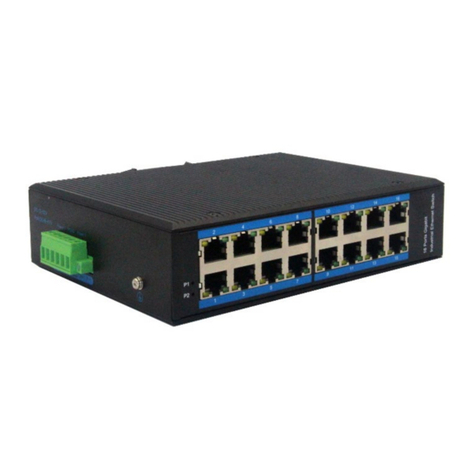
Digitus
Digitus DN-651129 Quick installation guide
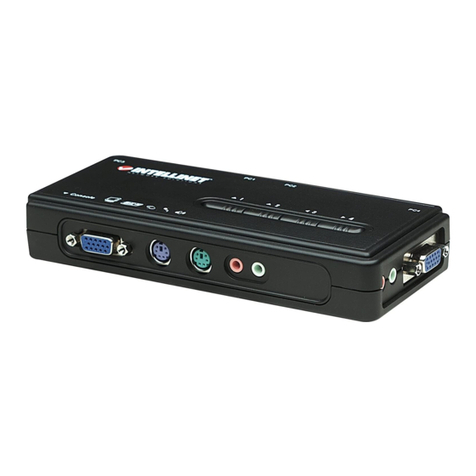
Intellinet
Intellinet 150101 Quick install guide
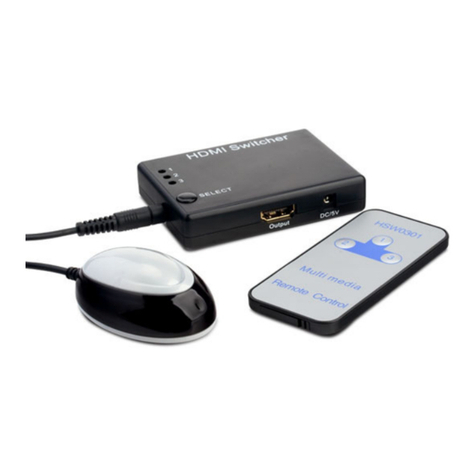
Lindy
Lindy 3 Port user manual
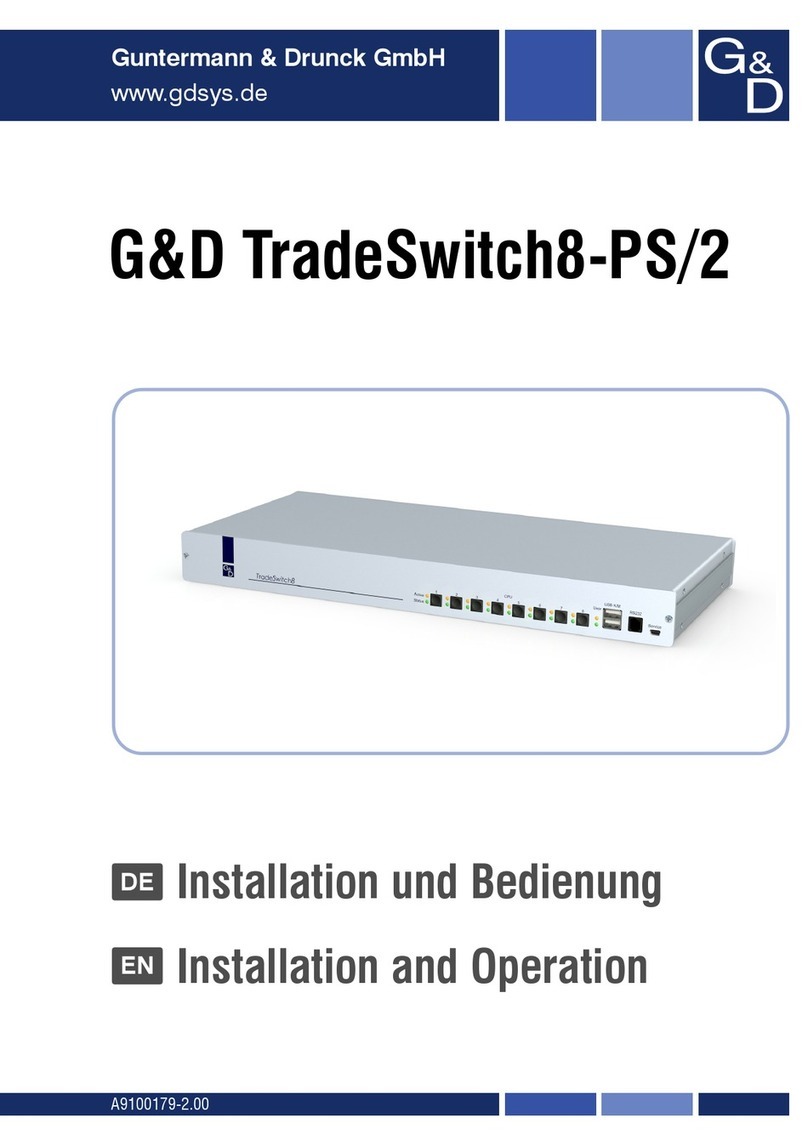
Guntermann & Drunck
Guntermann & Drunck TradeSwitch8-PS/2 Installation and operation
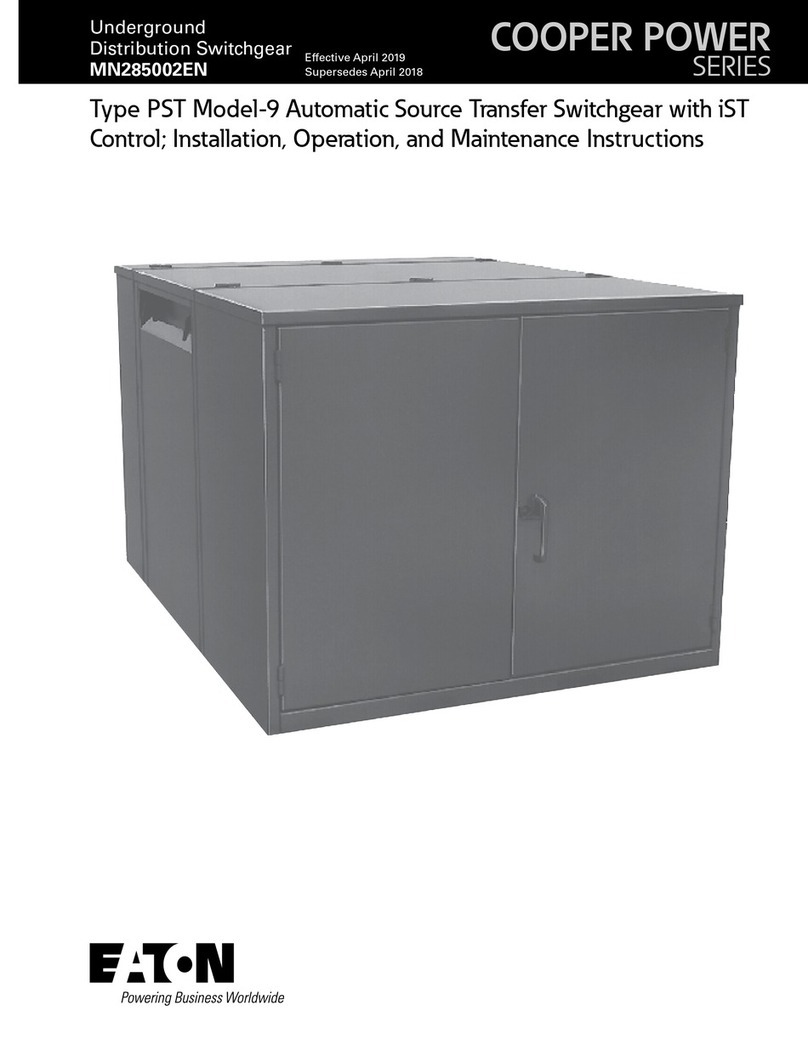
Eaton
Eaton COOPER POWER SERIES Installation, operation and maintenance instructions
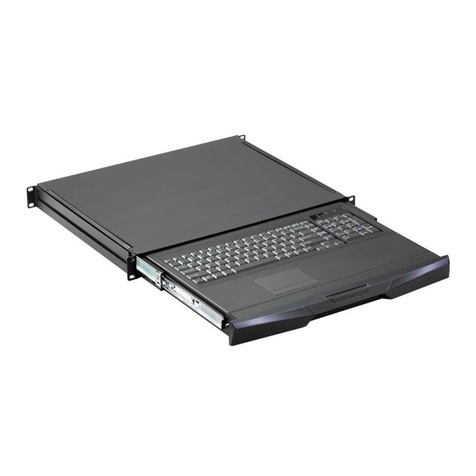
Crystal Image Technologies
Crystal Image Technologies RMD-184 manual



